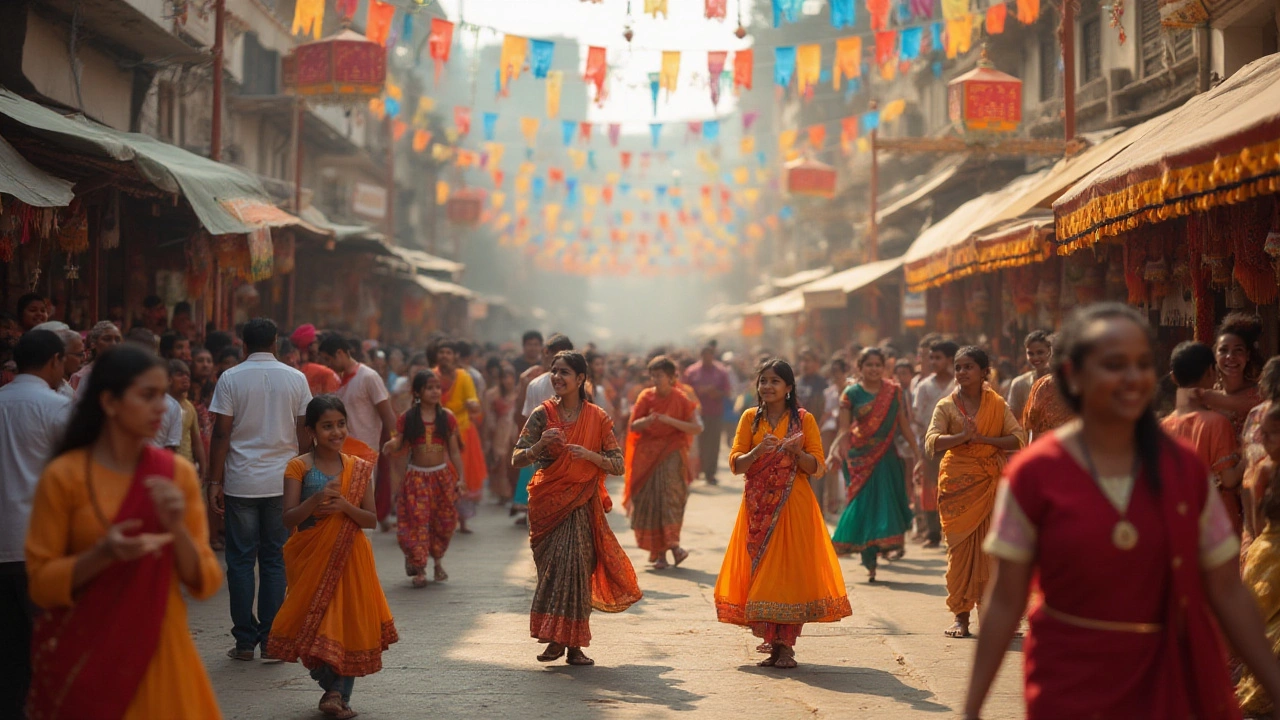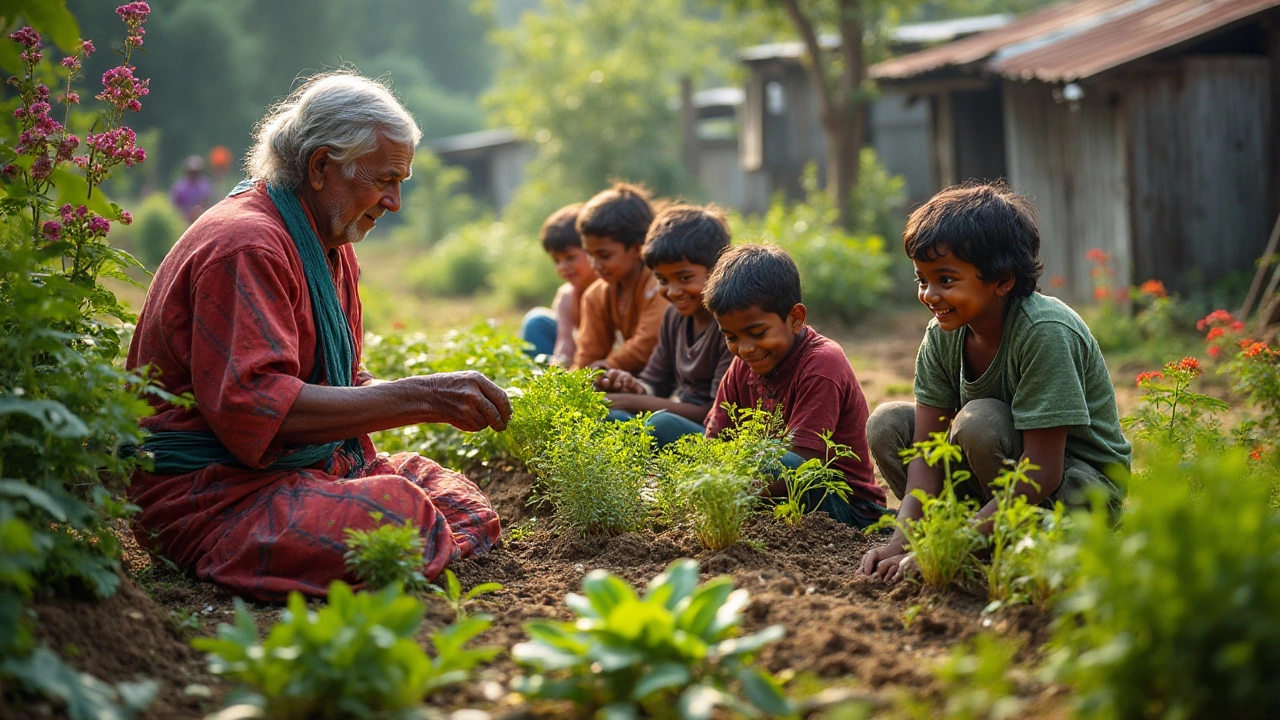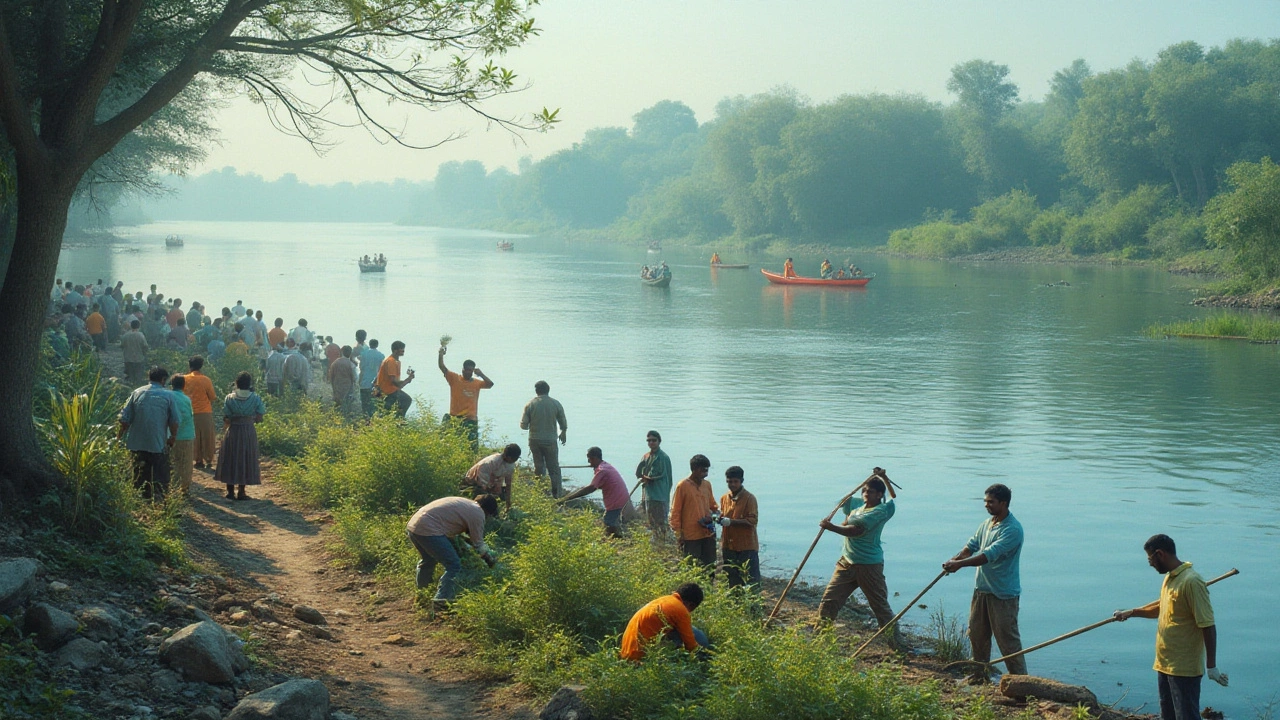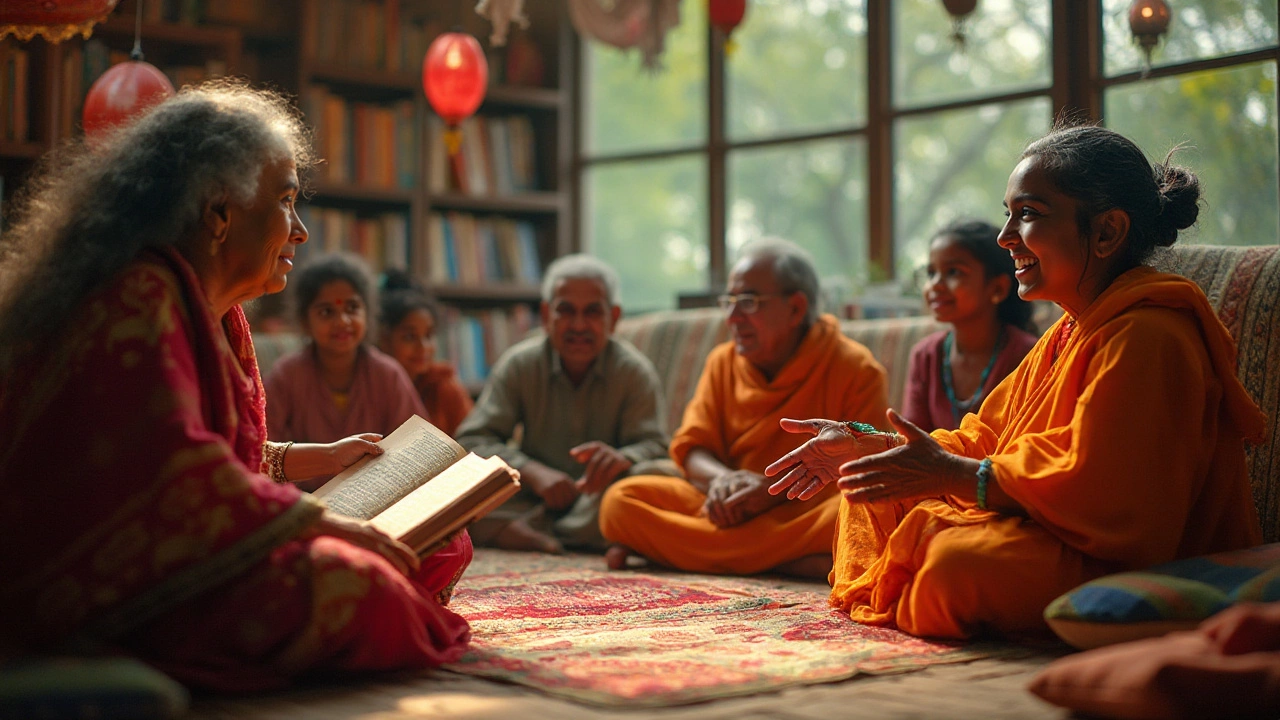
- Created by: Lydia Carmichael
- Completed on: 23 Jan 2025
- Categories: Community Support
In our busy world, finding time for community activities can sometimes feel like a challenge. Yet, these gatherings are more important than ever, acting as a glue that holds communities together. They spark connections and nurture relationships, ensuring that no one feels left out.
Community activities come in many forms, from neighborhood block parties to city-wide clean-up efforts. Each brings its own charm and opportunities for bonding. They serve not only as entertainment but also as a means to address local issues, champion causes, and share cultural stories.
Organizing a community event might seem daunting, yet it can be deeply rewarding. When people unite for a common cause or simply for the joy of getting to know one another, magic happens. This article aims to inspire and guide you on starting or participating in community initiatives that benefit everyone involved.
- The Nature of Community Activities
- Popular Community Events
- Creative Strategies for Engagement
- Tips for Successful Outreach
The Nature of Community Activities
Community activities are the heartbeat of social connectivity, spinning an intricate web of relationships and shared interests. These activities thrive on the diversity and enthusiasm within a community, reflecting both its cultural heritage and evolving identity. At their core, community activities are designed to foster unity and interaction among participants, encouraging a spirit of cooperation. They can range from intimate gatherings, like book clubs and craft circles, to large-scale events, such as festivals and parades, each serving unique purposes. An insightful study by the Community Tool Box suggests that communities engaging in regular activities experience higher levels of happiness and lower crime rates. The results aren't just anecdotal; they point to a deeply ingrained social need that transcends demographics and geography.
At their best, community activities serve as a nursery for ideas and collaborations. They're platforms where individuals can express themselves, harness their skills, and contribute to the common good. These activities often address pressing concerns like environmental conservation, social justice, and health awareness, allowing communities to tackle challenges head-on. For instance, beach clean-ups have been incredibly successful, drawing attention to marine pollution while also bringing volunteers together. A balanced mix of fun and purpose defines them, enhancing both participant satisfaction and community welfare. The influential educator John Dewey once remarked,
"The more one does outside, the more one comes together internally."His words capture the essence of community activities: by acting together, we knit our internal bonds tighter.
The organization of community activities often requires a blend of leadership and participation from local volunteers, businesses, and civic leaders. Because these activities are deeply rooted in local culture, they bear the potential to influence public opinion and drive change. Organizing them, however, isn't without its challenges. It requires clear communication, strategic planning, and resource management, typically steered by individuals who are deeply embedded within the community. But when successful, their impact reverberates far and wide, sometimes even igniting movements that gain national attention. Creating a roadmap for these activities involves engaging the populace, diagnosing community needs, and leveraging local resources.
One can argue that the strength of a community is bolstered by how effectively it can rally its members for communal activities. Empirical data collected by several sociological studies have shown that engaged communities exhibit better mental health outcomes and civic responsibility. The formation of support groups or outreach programs often stems from regular communal gatherings and discussions. Such activities breed a sense of belonging, affirming to each member that their presence and contribution matter. In crafting a community activity, the critical ingredient is inclusivity—ensuring that no voice is left unheard, regardless of age, race, or economic background. This inclusive approach is what transforms mere gatherings into bridges of understanding and friendship.

Popular Community Events
When it comes to community activities, some events stand out not just for their popularity, but for their ability to make a meaningful impact. Among these, neighborhood block parties are a favorite in many cities. These gatherings serve as a lively celebration of local culture and camaraderie, where people can unwind and enjoy an atmosphere of fun and friendship. They often include music, food stalls, and activities for children, making them inclusive for all ages. A community activity like this offers a chance for people to share stories, show off their culinary skills, and build stronger bonds.
Farmers' markets have become another staple event for many communities. Not only do they provide a venue for buying fresh produce and artisan goods, but they also support local farmers and entrepreneurs. These markets create a vibrant space where the community can learn more about sustainable living and organic farming while enjoying live music and activities. Through casual conversations with vendors, visitors gain insights into the origins of their food and the passion that goes into farming. In a digital age, these face-to-face interactions remind us of the value of personal connection, something vital for a thriving community.
Community clean-up events are crucial for maintaining and improving local environments. These events bring people together with a shared goal of sprucing up parks, beaches, or streets. Participants often express a sense of pride and accomplishment post-event, seeing firsthand the difference their efforts make. Cleanups help to instill environmental responsibility and awareness and illustrate teamwork's powerful effect on local ecosystems.
For those interested in more cultural pursuits, heritage festivals offer an enriching dive into the tapestry of traditions that shape a community. Such festivals are not only entertaining but educational, offering workshops that teach traditional crafts, dances, or language. Attendees leave with a deeper understanding and appreciation for the numerous cultures that coexist in their community, encouraging respect and inclusion among all.
Some communities have embraced technology-driven events like hackathons or robotics competitions, fostering innovation and learning. Another emerging trend has been skill-sharing workshops, where community members teach each other everything from coding to cooking. These events empower individuals with new skills while reinforcing the idea that each person has something valuable to contribute to their community. Including the youth in these engagement activities is crucial as they are the future building blocks of society.

Creative Strategies for Engagement
Creating a truly engaging community activity requires a blend of imagination, inclusivity, and a keen sense of what inspires people to come together. As society evolves, so do the needs and interests of its members, making it vital to think outside the box when planning events. A defining feature of successful engagement strategies is their ability to resonate with the community's pulse, whether that involves tapping into cultural trends, embracing technological advancements, or simply providing a platform for meaningful social interactions.
One innovative approach involves blending modern technology with traditional engagement practices. The rise of social media platforms and digital tools offers exciting new avenues to reach broader audiences. For instance, organizers can use virtual reality (VR) to create immersive experiences that bridge geographical divides, allowing people to participate even if distance might otherwise prevent them. Take the example of community art projects that use augmented reality (AR) apps to display artwork in public spaces, thereby transforming a simple park or street into an interactive exhibit that sparks curiosity and conversation.
Embracing diversity is another cornerstone of crafting engaging activities. Communities are vibrant tapestries of different cultures, backgrounds, and viewpoints. When planning events, it's essential to incorporate elements that celebrate this diversity, offering something for everyone. Festivals that feature a global cuisine, music from various cultures, and workshops on traditional crafts are just a few ways to foster inclusivity. Education-focused events that align with current societal changes, such as sustainability workshops or language exchange programs, are also impactful. In an article for The Guardian, sociologist Dr. Amelia Thompson states,
"True community engagement comes when people see themselves reflected in both the planning and execution of activities, creating a feeling of shared ownership and pride."
Volunteering can act as a pathway to deeper community involvement. Encouraging residents to take an active role in hosting or leading an event not only empowers them but also ensures that activities are tailored to local needs and preferences. This could mean forming volunteer committees to tackle specific social or environmental challenges, from organizing local farmers' markets to setting up neighborhood watch groups. Engaging local businesses and stakeholders as sponsors can not only help cover logistical needs but also deepen the sense of community by fostering relationships between businesses and residents. An often-cited statistic shows that communities with active volunteer programs see increased social cohesion and trust, leading to improved quality of life indicators.
Lastly, one mustn't overlook the power of storytelling as a tool for engagement. Humans are inherently drawn to stories that evoke emotion, whether it's a shared struggle or communal triumph. Events that center around storytelling, such as 'story slams,' history-focused walking tours, or cultural heritage nights, offer participants the chance to connect on a personal level. Encouraging community members to share their own experiences or the history of their neighborhood can create a web of interactions that tightens the communal fabric. It's this shared empathy and understanding that can truly hold a community together, turning an event from just a gathering into a cherished experience remembered for years to come.

Tips for Successful Outreach
When planning a community activity, the goal is to engage, excite, and inspire participation. To achieve this, one must understand the pulse of the community—what interests them, what they cherish, and what activities they would be willing to support. Begin by conducting simple surveys or informal conversations to identify needs and preferences. Steer clear of assumptions, as they often lead to mismatched expectations and disengagement. Instead, empower community members by involving them in the planning process. Collaboration can turn a good event into a great one, as it ensures inclusiveness and creates a sense of ownership among participants.
Social media and local online forums are powerful allies in spreading the word. Creating buzz around your community events can attract not only existing community members but also newcomers. Craft compelling messages and visuals that resonate with the core values of your target audience. Testimonials from previous activities can add credibility and spur interest. A strategic use of hashtags can increase visibility, ensuring your event is noticed by the right people. Enlisting local influencers or partners to share your event also magnifies its reach.
Aside from virtual engagement, tangible tools can also enhance success. Flyers and posters still hold sway, especially in tight-knit neighborhoods where foot traffic is significant. Even in our digital age, a well-placed notice on a community board can do wonders. Don't underestimate the power of word-of-mouth; people value personal recommendations. Host information sessions or small meet-and-greets to bolster awareness. Offering a glimpse of what the activity entails can leave potential participants eager to return with friends and family.
Budgeting is another critical piece of this puzzle. Proper allocation and tracking not only prevent financial mishaps but also allow more room for creativity. Consider donations and sponsorships from local businesses, which can defray expenses and foster goodwill. Often, nearby enterprises are willing to contribute in-kind sponsorships like food or venue space in exchange for promotional opportunities. An essential takeaway here is ensuring transparency with stakeholders and potential sponsors. Transparent financial handling enhances trust and opens doors for future collaborations.
"Great opportunities to help others seldom come, but small ones surround us every day." – Sally Koch
Lastly, adaptability is key. Be prepared for unexpected hiccups and have contingency plans in place. Flexibility in problem-solving can mean the difference between a minor setback and a disorganized event. On the day itself, clearly designated roles for volunteers help maintain order and ensure all parts of the event run smoothly. Remain receptive to feedback post-event, as it's a treasure trove for improving subsequent activities. Ultimately, measuring success isn't solely in numbers but in the richness of connections and shared experiences fostered during the outreach.